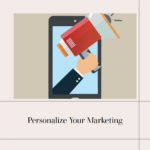Introduction:
Augmented reality (AR) technology has revolutionized the way brands engage with consumers, offering immersive and interactive experiences that bridge the gap between the digital and physical worlds. AR marketing enables brands to create unique, memorable, and personalized experiences that captivate audiences, drive engagement, and differentiate themselves in the competitive landscape. In this guide, we’ll delve into the exciting realm of augmented reality marketing and explore its potential to transform the future of brand-consumer interactions.

1. Understanding Augmented Reality (AR):
Augmented reality is a technology that overlays digital content, such as images, videos, or 3D models, onto the real-world environment, enhancing users’ perception of reality. Unlike virtual reality (VR), which immerses users in entirely virtual environments, AR integrates digital elements seamlessly into the physical world, often through the use of smartphones, tablets, or wearable devices. AR technology enables users to interact with virtual objects and information in real-time, creating engaging and interactive experiences.
2. Leveraging AR for Brand Engagement:
AR marketing offers brands a powerful tool for engaging with consumers in innovative and memorable ways. By integrating AR experiences into marketing campaigns, brands can captivate audiences’ attention and leave a lasting impression. Whether through interactive product demonstrations, virtual try-on experiences, immersive storytelling, or gamified activations, AR enables brands to create dynamic and interactive content that resonates with consumers and drives engagement.
3. Enhancing Product Visualization and Discovery:
AR technology provides consumers with the ability to visualize and interact with products in a virtual environment, enhancing the shopping experience and driving purchase decisions. Brands can leverage AR to enable virtual product try-ons, allowing users to preview how products will look and fit in their real-world surroundings. Additionally, AR-powered product visualizations can provide users with detailed information, customization options, and immersive demonstrations, facilitating product discovery and increasing confidence in purchasing decisions.
4. Creating Interactive Brand Experiences:
AR marketing allows brands to create interactive and immersive experiences that foster deeper connections with consumers. From location-based AR experiences that guide users through physical spaces to AR-powered games, filters, and interactive advertisements, brands can leverage AR technology to create memorable and shareable experiences that resonate with audiences. By encouraging user participation and engagement, brands can amplify their reach and visibility, driving brand awareness and loyalty.
5. Personalizing Marketing Campaigns with AR:
AR technology enables brands to deliver personalized and contextualized experiences tailored to individual preferences and behaviors. By leveraging user data and insights, brands can create AR experiences that resonate with specific audience segments and address their unique needs and interests. Whether through personalized product recommendations, virtual try-on experiences customized to users’ style preferences, or location-based AR activations, brands can use AR to deliver relevant and engaging content that drives conversions and strengthens customer relationships.
6. Measuring Performance and ROI:
As with any marketing initiative, it’s essential to measure the performance and return on investment (ROI) of AR marketing campaigns. Implement tracking mechanisms and analytics tools to monitor key performance indicators (KPIs) such as engagement rates, interaction metrics, conversion rates, and customer satisfaction levels. Analyze the data collected to assess the effectiveness of AR experiences in achieving marketing objectives and generating tangible business outcomes. Use insights gained from performance analysis to iterate and optimize future AR marketing efforts for maximum impact and ROI.
Conclusion:
Augmented reality (AR) marketing represents a groundbreaking opportunity for brands to engage with consumers in dynamic, interactive, and personalized ways. By leveraging AR technology to create immersive brand experiences, enhance product visualization, foster interactivity, and personalize marketing campaigns, brands can differentiate themselves, drive engagement, and build lasting relationships with consumers.
As you explore the possibilities of AR marketing, remember to prioritize creativity, innovation, and user experience to create compelling and memorable experiences that resonate with your audience. By embracing AR as a strategic tool in your marketing arsenal, you can unlock new opportunities for brand-consumer interaction and propel your marketing efforts into the future.



